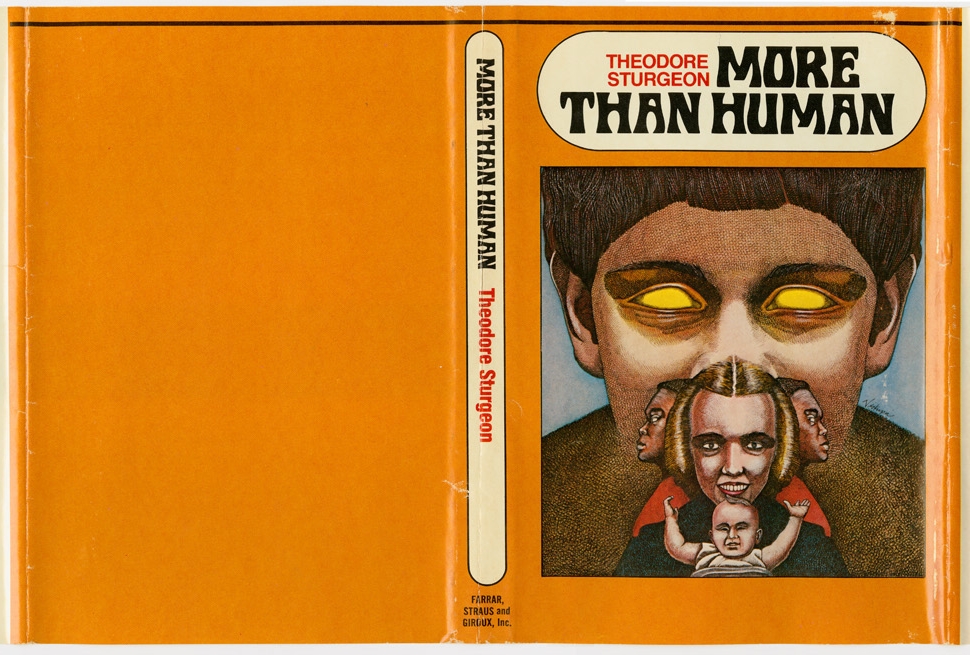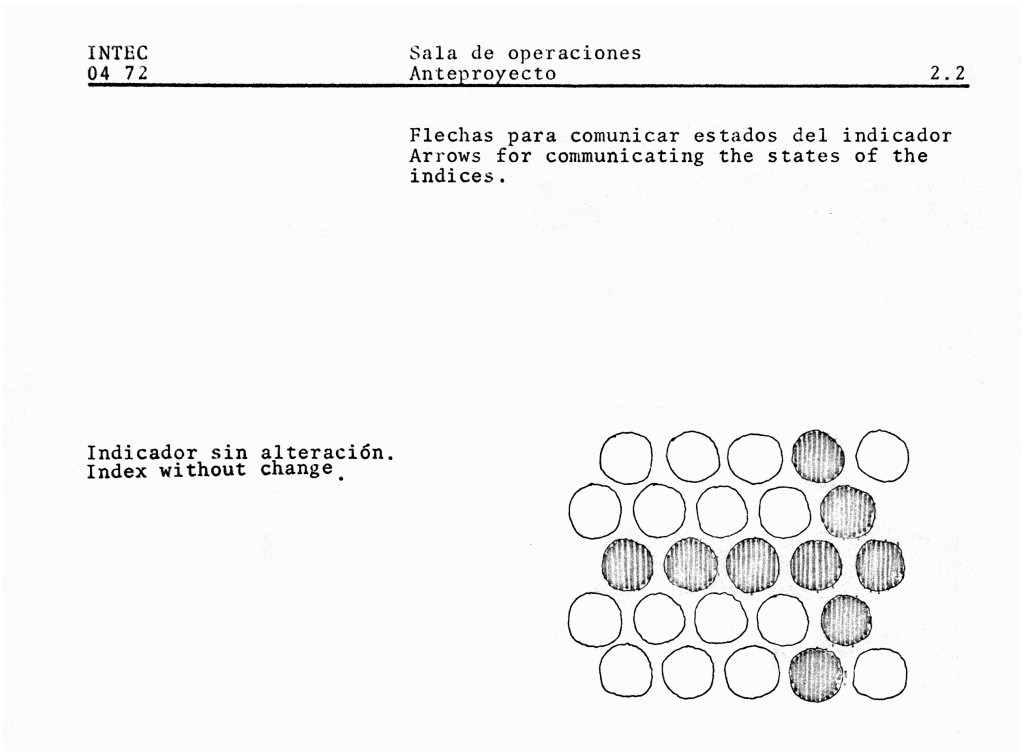BLESH has its origins in two ideas about human interconnectedness, one fictional and one real.
Telepathy

BLESH is a mix of the words blend and mesh. In sci-fi writer Theodore Sturgeon’s More Than Human a group of humans BLESH telepathically, allowing them to communicate and act as a single organism. Sturgeon calls this next step in the evolution of the human race Homo Gestalt.
Cybernetics
The app’s diagonal pixel grid is based on a simple display design by pioneering systems theorist Stafford Beer. In the early seventies, he designed a system called Cybersyn to control Chile’s economy based on instantaneous feedback from factories around the country. This display device was intended to be part of the system’s control room. It consisted of a simple array of bulbs flashing on an off to form dynamic icons, with the resulting diagonal lines and arrows indicating the ups and downs of the Chilean economy.
Affordances
When designers talk about the things they make in terms of their affordances, they’re talking about the way the form of an object can suggest the ways in which it might be used. A good example is the way the design of a saucepan suggests it should be picked up by the handle.
Maybe it’s possible to think about systems in terms of their affordances? Can a different arrangement of pixels suggest certain kinds of images that the standard pixel grid does not? Can it enable a kind of communication otherwise impossible?